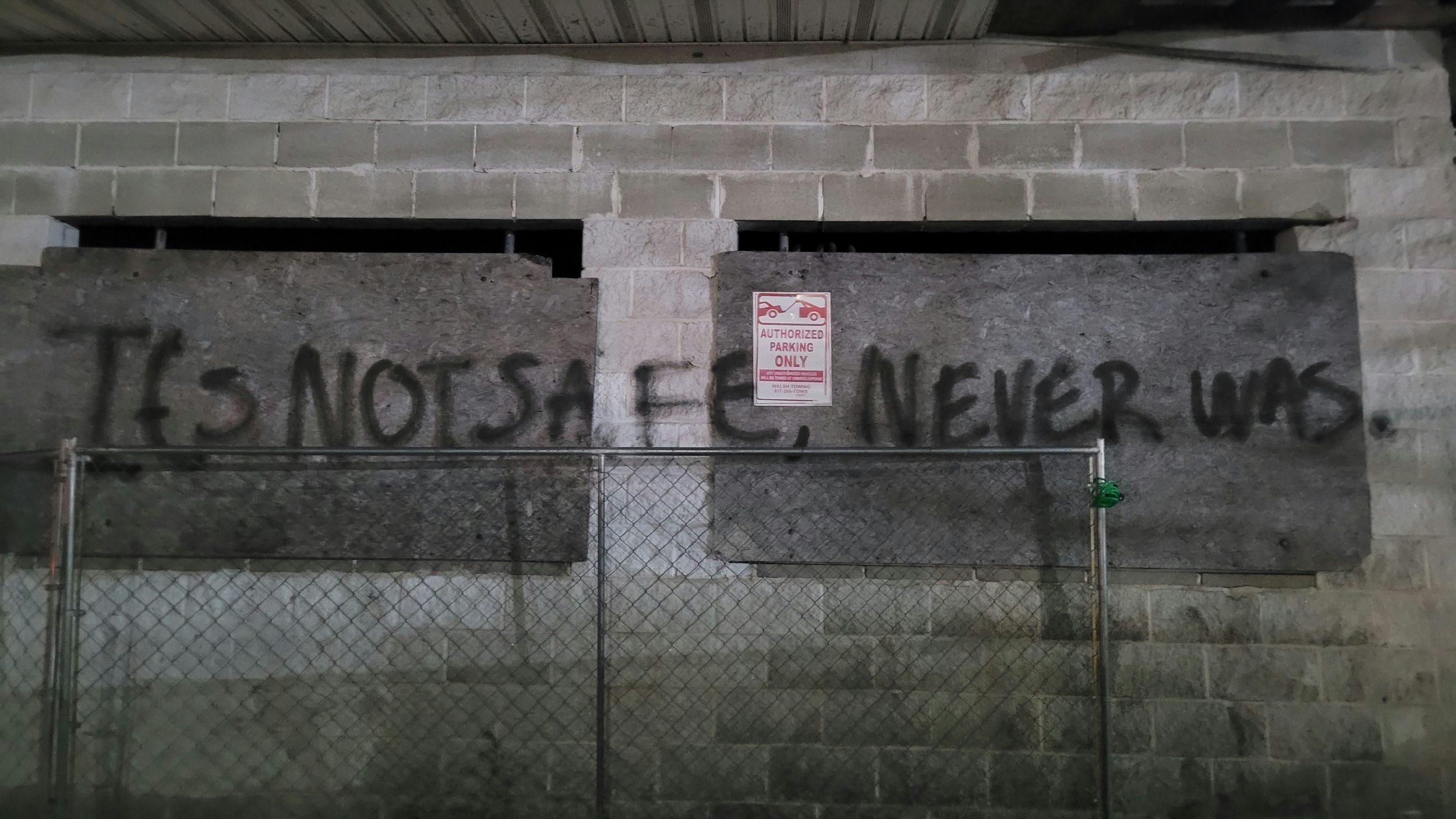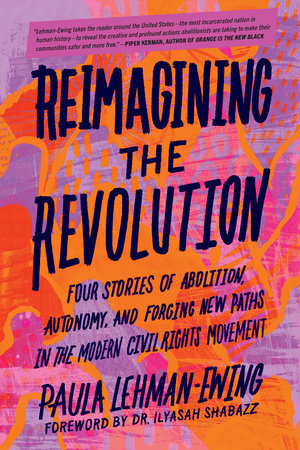Ivan Kilgore and I connect late at night, after my kid goes to bed and before California State Prison Solano begins to lock down. We talk over video conference, me in front of my computer, the retina display cutting through the darkness of my sleepy house, and Ivan on a choppy tablet, the dayroom’s fluorescent lights beaming down on him. He’s usually wearing a skullcap and a white T-shirt that make him stand out from the backdrop of iron bars and concrete walls. His skin is a light shade of brown, a hue he inherited from scattered interracial marriages among his family tree: His mother was born to a Black woman and an Irishman, and his father’s father was the son of a predatory slaveowner. A close-trimmed beard outlines Ivan’s billowing cheeks and sharp jawline. He has a stocky build, with broad shoulders, a figure that would have cast a large shadow over the young man who entered the California prison system two decades ago.
Ivan has spent the last three of his twenty-four years in prison in his six-by-eight-foot cell at Solano. An avid reader, he’s amassed an array of books. They line the plastic shelving opposite his bed, with condiments and toiletries serving as bookends. A stack of research papers shares the middle shelf with commissary goods, such as salt and hot sauce, along with a bowl and a coffee mug. Under that are two levels of neatly stacked documents, containing everything from court filings to foundation records and personal writings. Since Ivan doesn’t currently have to share a cell, these compositions overflow onto the empty top bunk in tidy, organized piles.
A small table with a round-top stool drilled into the back wall serves as the epicenter of Ivan’s operations. On a heavy clear-case typewriter, he coauthors research papers; writes scholarly articles for university projects; files lawsuits, motions, and petitions on behalf of himself and other incarcerated people; and drafts manuscripts for his future publications. It’s also where he conducts meetings for the United Black Family Scholarship Foundation, a nonprofit he established from prison in 2014 to architect a unique, multifaceted movement for Black liberation. With only two available electrical outlets, the typewriter is on rotation with a thirteen-inch television, a radio, and his prison-issued tablet. The wires for these devices crisscross along the concrete, creating frames around a mirror, a poster of an Islamic prayer, and a picture of Malcolm X.
Solano is the fourth prison where Ivan has been incarcerated. He transferred there from Salinas Valley and, before that, spent time at San Quentin and New Folsom. Each prison’s program offerings and work detail have varied, but Ivan has felt a distinct continuity in how the prison system treats the population it controls. Ivan believes in abolition not because it would mean his freedom, but because the foundation of each prison he has been to is the same: It is a place where people are caged like shelter dogs, where they are identified by a number or by “Inmate!” and where violence and cruelty manifest often.
Ivan’s experiences at San Quentin and New Folsom were especially telling. San Quentin is almost beautiful, its sand-colored walls jutting out into San Francisco Bay, its guard tower positioned like a lighthouse against the postcard backdrop of the Richmond–San Rafael Bridge. With easy access to Northern California’s hotbeds of progressive activism—Berkeley, Oakland, and San Francisco—the prison offers several programs, from art workshops to college classes, and frequently welcomes guest speakers from organizations such as Human Rights Watch and the American Civil Liberties Union. A revamped recording studio has allowed podcasts including Ear Hustle (recorded using a hybrid of incarcerated and outside hosts and production crews) to become mainstream entertainment. Ear Hustle was even nominated for a Pulitzer Prize and earned its incarcerated original host, Earlonne Woods, a sentence commutation from the governor.
Conversely, California State Prison Sacramento, known more commonly as New Folsom, has very few programs for people seeking creative outlets or higher education. It is known mostly for its violent history. In 2021 the FBI opened a probe into a coordinated effort between guards and the Aryan Brotherhood—a white-supremacist prison gang—to murder three people incarcerated there. Riots in 1996 and 2011 left one incarcerated man dead and fifteen people injured. Ivan was incarcerated at New Folsom when Hugo Pinell, who participated in the alleged escape attempt that led to the fatal shooting of Black revolutionary activist and author George Jackson, was killed during a 2015 riot.
What’s important to keep in mind, Ivan explains, is that this juxtaposition between San Quentin and New Folsom does not make the former a “good” prison. Programming at San Quentin has routinely been stripped away for minor infractions—such as smoking a cigarette, stepping across a yellow line, or using the telephone for too long—indicating, Ivan says, that rehabilitation is an excuse for prison, not its purpose. If prisons were meant to rehabilitate, why would infractions lead to less programming? Why would a person need to serve a life sentence? The real purpose of prison, he believes, is to deny the humanity and existence of certain members of society, to hide them away in plain sight. At the end of the day, the professors and organizers leave, and the men return to cold cells and an environment defined by dehumanization and violence. San Quentin, Ivan says, is not a “good” prison, because there is no such thing as a good prison. It is designed, like all the others, to dehumanize, destabilize, and deactivate.
This was no more apparent than in 2020 when San Quentin became an epicenter of one of the worst COVID-19 outbreaks in the country. Reckless actions taken by the prison department exemplified the type of dehumanization that defines incarceration. In May of that year, administrators ordered a transfer of incarcerated people from California Institution for Men into San Quentin, a technique the department has used for years to get around a federal mandate ordering the administration to decarcerate its dangerously overcrowded facilities. Before the transfer, San Quentin had zero cases of COVID-19 among its population. California Institution for Men had already had an outbreak, and prison administrators insisted the transferees not be tested before they boarded the bus. Within three months of the transfer, 2,237 people at San Quentin became infected with the virus, the most of any facility at that time. Twenty-nine incarcerated men died as a result.
Decarceral thinkers and doers
Every week, Inquest aims to bring you insights from people thinking through and working for a world without mass incarceration.
Sign up for our newsletter for the latest.
Newsletter
The carelessness with which prison administrators and staff were treating the potential for the novel coronavirus to devastate the prison population was already well documented by the time the San Quentin transfer took place—in large part thanks to footage Ivan had captured on his cell phone. (Although considered prison contraband, hundreds of thousands of cell phones are smuggled inside, usually by guards.) Aired by Vice News in April 2020, the video, “This Is What It’s Like to Be in Prison During Coronavirus,” shows groups of men working out and congregating in groups inside the dormitory, with yard time limited or, in some prisons, prohibited due to the pandemic lockdown. There are no barriers, no protective face coverings.
“All it takes is just one person in here to become infected with the coronavirus, and it’s a wrap,” a barely blurred Ivan tells a Vice reporter in the video. “Everyone’s going to be infected.”
The video received half a million views, and almost immediately reporters began tracking down footage from prisons around the country. These morbid videos showed men dying in their cells and incarcerated people provided with inadequate protective measures, such as a hotel-sized bar of soap distributed every other week. The truth about COVID inside prisons was out, and emergency decarceration was undertaken by several states, proving the viability of decarceration on a large scale.
Meanwhile, Solano had it out for Ivan. Vice had neglected to alter his voice in the interview, and it was clear who the source of the video had been. Guards tossed Ivan’s cell looking for the phone. When they came up empty-handed, they tossed the cells of the incarcerated folks Ivan had filmed, telling them Ivan was to blame for lost privileges such as exercise and dayroom activity time. The hope was, of course, that retribution would take care of the administration’s PR problem. But when the men saw the video, and the changes the administration began to make as a result of it—all of a sudden, masks and soap were more readily available—Ivan was given a reprieve.
That’s not to say prison is easy for Ivan, and the first time he speaks to a new batch of interns for his nonprofit, he implores them to think beyond making prison a better place.
“A prison is an inhumane place, and nothing can alter the existing structure enough to change that,” he said to a group of UC Irvine students. “Please. Don’t waste my time trying to make it more comfortable for me in here.”
Excerpted from Reimagining the Revolution Four Stories of Abolition, Autonomy, and Forging New Paths in the Modern Civil Rights Movement by Paula Lehman-Ewing, published by North Atlantic Books, copyright © 2024. Reprinted by permission of publisher.
For more on Paula and Ivan’s collaboration, read their coauthored Inquest article “Asymmetrical Partners.”
Image: Shiola Odan/Unsplash


